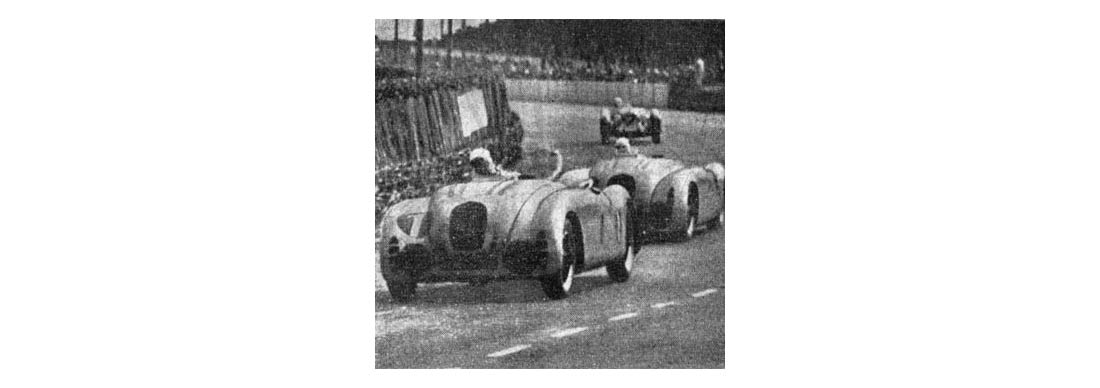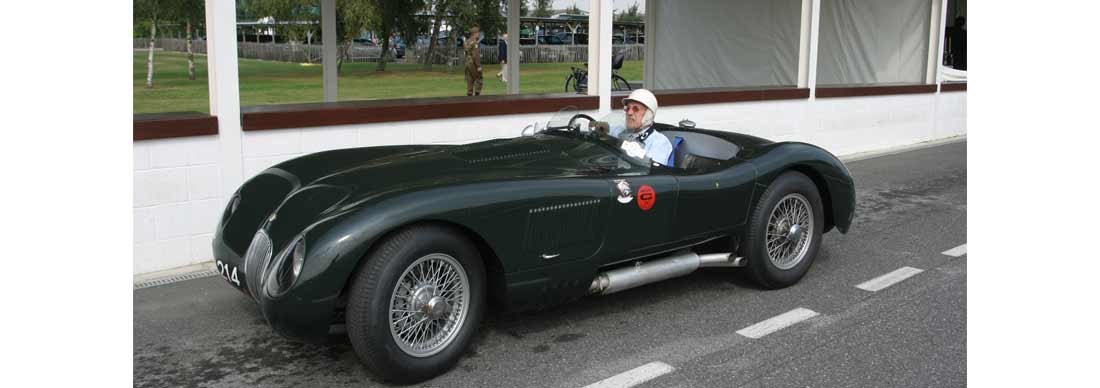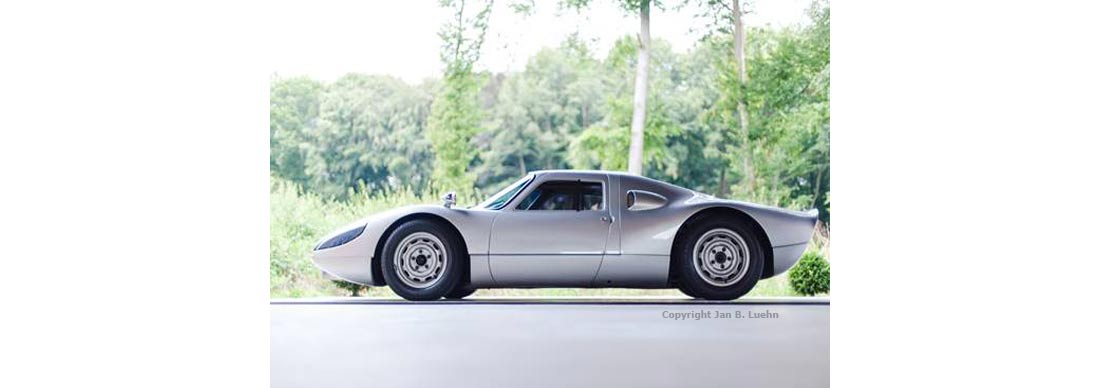
Jaguar C-type Replicas - The Uproar Grows In Volume
To remind those not familiar with the current uproar: companies and individuals have been building replicas, particularly of C-type Jaguars, since the ’70s. Several companies have stated they have received tacit approval from Jaguar whom, they claim, have provided assistance, including drawings, and Jaguar themselves have used replicas in various ways within their business (I personally know this because I went on their Driving Experience press launch with Stirling Moss and Norman Dewis, and one of the race driving instructors, with whom I shared the C-type, quietly admitted they were replicas).
However, after interacting from late 2015 with a Mr. Karl Magnusson in Sweden, who was building at least one C-type with Jaguar Classic’s full knowledge, JLR then took court action against him in Sweden, not in the UK, claiming copyright in Sayer’s 1950/51 design and that ‘C-type’ is a Jaguar-owned trademark. They won this court case, with the result Mr. Magnusson has to pay JLR’s legal costs of £450,000 and destroy his car.
JLR have stated publicly that they gave Magnusson the chance to keep his car and avoid the court action, but have declined to provide any proof of those assertions.
Following the ruling, they have written to at least one company demanding they ‘cease and desist’ from manufacturing C-type replicas, quoting the Swedish ruling.
Interestingly, a forthcoming Sports Car Market article, a draft of which we have seen, states that JLR would not win such an action in the USA. However, unless Magnusson appeals, and wins that appeal, JLR have the court’s ruling that they can call upon within the EU and, seemingly, the UK.
Some have questioned why a mighty company such as JLR would bother to pick on a retired Swedish pensioner, and that there must be more to it – that Manusson is not merely a long-term Jaguar enthusiast, as he claims, but had commercial intentions. Magnusson does not deny that he had originally planned to build two more cars (JLR contend more but this is denied) but, as soon as JLR objected, he dropped any such plans. We have seen e-mails and statements made before the court case, in which Magnusson repeatedly stated he had dropped any commercial aspirations and merely wished to complete his one car for his personal use.
The concern in the trade and media is that this is the thin end of the wedge. That Jaguar could now stop companies making, for example, E-type panels. If JLR can behave like this, then so can every other manufacturer, threatening the whole post-war historic-car movement.
Where will this end up? It is alleged, and we have been given two examples, that artists have been threatened with legal action if they do not cease selling their own representations of, in one instance an E-type (we have been sent the relevant Tweet), and in another a Land-Rover.
To support their court case, Jaguar hired and paid an expert witness. I have seen his statement, with quotes from a number of my books and articles over the last 20–30 years, and from other well-known writers, and I disagree with much in this paper, especially the contention that the C-type was the first sports-racing car not to have separate wings/fenders. As stated in the last issue, I contended and illustrated in a book as far back as 1984, that the C-type could have been heavily influenced by the Bugatti Type 57 ‘Tank’ which won Le Mans in 1937 and 1939. The first streamlined Bugatti ‘Tank’ was the T32 and that dated back to 1923.
It would be an interesting debate as to who actually created the very first automotive design that had the front wings/fenders integral with the main central body. We welcome contributions on this subject.
There is so much ‘paperwork’ to do with the Magnusson case that a lot of interested parties are in danger of ‘drowning’. I will finish with a couple of quotes which, we are informed, were made by JLR’s lawyers, including the original in Swedish in case they have been mis-translated:
2019-02-22 Formal correspondence through the court: page 3-4
“Påståendet om att olika företag under åren har tillverkat en mängd Jaguar-replikor utan någon förekomst av diskussion med Jaguar, eller åtgärder från Jaguars sida, bestrids, Jaguar är mån om sina immateriella rättigheter och påtalar kontinuerligt intrång som kommer till bolagets kännedom.”
“Jaguar disputes the claim that various companies over the years have manufactured a number of Jaguar replicas without any discussion with Jaguar, or action taken by Jaguar. Jaguar cares about its intellectual property rights and continuously objects to infringements brought to the company's attention.”
“Jaguar bestrider även att bolaget skulle tillåtit att replikor tävlar i av Jaguar arrangerade tävlingar.”
“Jaguar also disputes that the company has allowed replicas to compete in races arranged by Jaguar.”
2019-09-06 Formal correspondence through the court: page 5
“Jaguar gör för närvarande en översyn av reglerna i Jaguar Classic Challenge för att göra om och återlansera tävlingen så att replikor inte ska tillåtas.”
“Jaguar is currently reviewing the rules in the Jaguar Classic Challenge to rewrite and relaunch the competition so that replicas are not allowed.”
And finally, we have been sent the transcript of the court case, which we assume to be accurate, but have not personally checked and have no means to do so. In this the JLR lawyer allegedly states, “...we, as in Jaguar Cars, at that time sold vehicles to individuals for use on the road, not as race competition vehicles”.
Jaguar Cars built 53 C-types, including the works cars. As far as I can determine, only four examples were not raced, or entered in races, by their original owners.






7 comments
And about the d type
LEny
Big companies going after little people, well, I guess I won’t be buying that new F type after all. Maybe I’ll get an Evora despite that Chinese connection.
John
I can attest to the fact that JLR used replica D-types and I assume C-types in their Jaguar Experience Promotion for a profit. In May 2018, I was charged to drive a D-Type (VTK 705) on the JLR test track in the UK near Coventry with a JLR instructor sitting in the passenger seat. So, they actually used replicas car they do not build themselves to make money, and are now suing replica builders?? Something is wrong here.
Glen Barker
On the subject of which was the first car to bear incorporated front wings, I’d like to bring attention to the 1939 Alfa Romeo 6C 2500 Ala Spessa. While, obviously, not the first, it is interesting because it clearly proved the aerodynamic benefits of such styling. Only two examples were built, to be used by the Alfa works team to contest the Tobruk to Tripoli race in Libya, which replaced the Mille Miglia that year, owing to the large number of casualties on the previous year’s event and the temporary ban imposed by Mussolini. The coachwork was designed and built by Carrozzeria Touring, who also built the standard coachwork which clothed two other cars entered by the team. Although the “Ala Spessa” coachwork was heavier (due to more metalwork) the cars that wore it were clearly faster on the long straights of this event, and one of them won outright. This extra speed was in spite of the cars having identical mechanical specification and more weight, and was entirely down to superior aerodynamic efficiency, gained from the integrated front wings. Like the Bugatti T57 “Tanks”, and others, the Ala Spessa comfortably pre-dated the C-Type.
Graham Earl
Hi Philip. In response to your request in your recent article on the Swedish debacle, you sought comment on closed wheel body desgn? When it comes to the first closed-wheel production cars I always believed these to be Ferrari’s earliest production car… the game changing 166. The Barchetta, as it became known. Please take look at a series of Instagram posts I did on the fabulous 166 line up we all saw at Concours of Elegance at Hampton Court Palace a few years ago. Here’s a link https://www.instagram.com/p/B4_EyPhFzzO/?igshid=1gq0aa1wzfwfn
Whilst Bugatti’s Tank was probably the first closed wheeler, my understanding is that it wasn’t a series production.
I’m sure Keith Bluemel will confirm the 166, designed in ’48, holds the crown of the first closed-wheel production run… not the C-Type
Mark Perl
Despicable and abhorrent behaviour by JLR . What goes around…
YBerg
I found the following JLR statement in a discussion group on the subject:
“Jaguar Land Rover are not going after private owners of pre-existing individual replica vehicles, nor insisting upon the destruction of their vehicles. However, we will take action to prevent businesses using our IP illegally for their own profit.”
It might be good to determine whether this is official JLR policy.
Peter Wright
Leave a comment
This site is protected by hCaptcha and the hCaptcha Privacy Policy and Terms of Service apply.